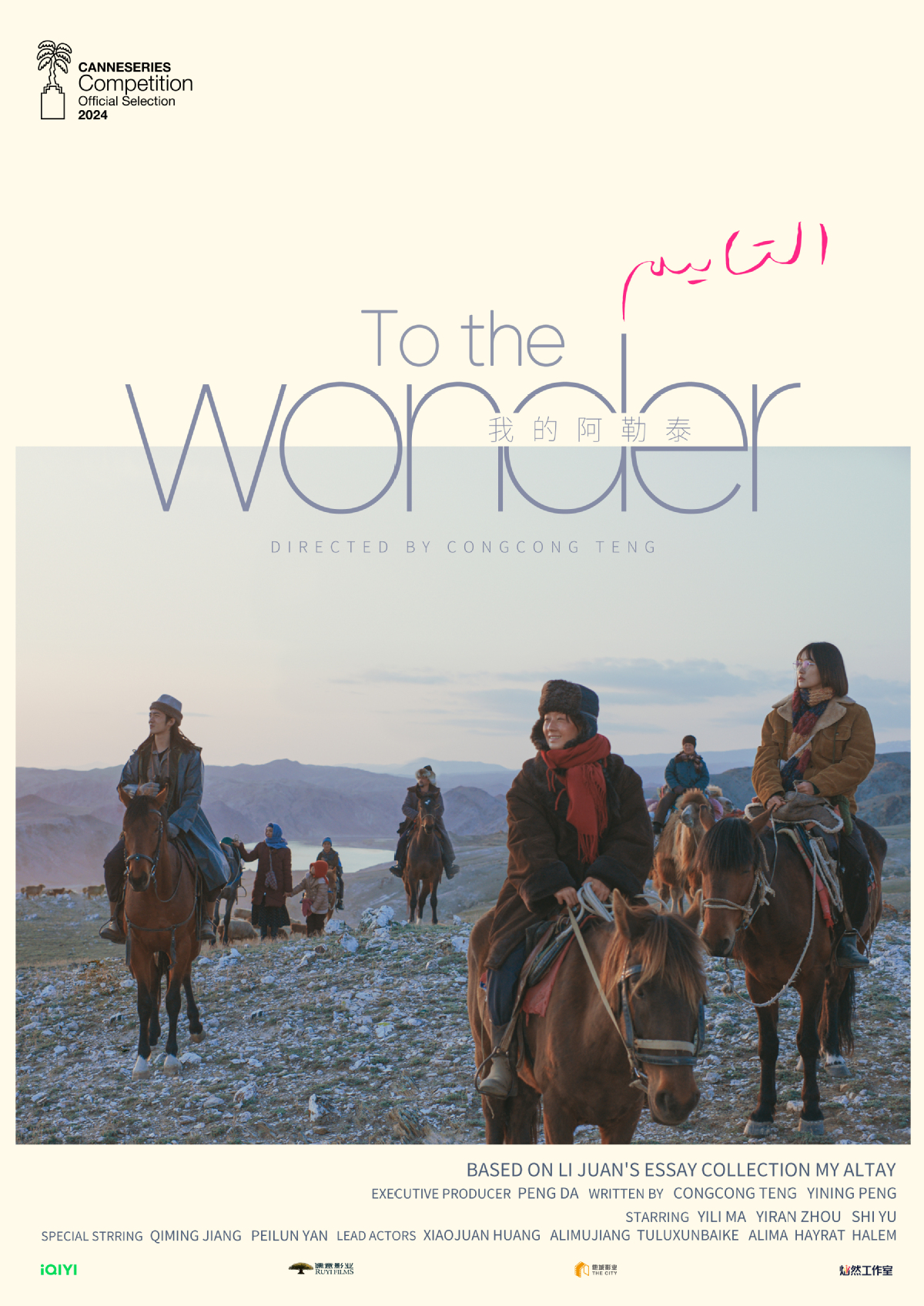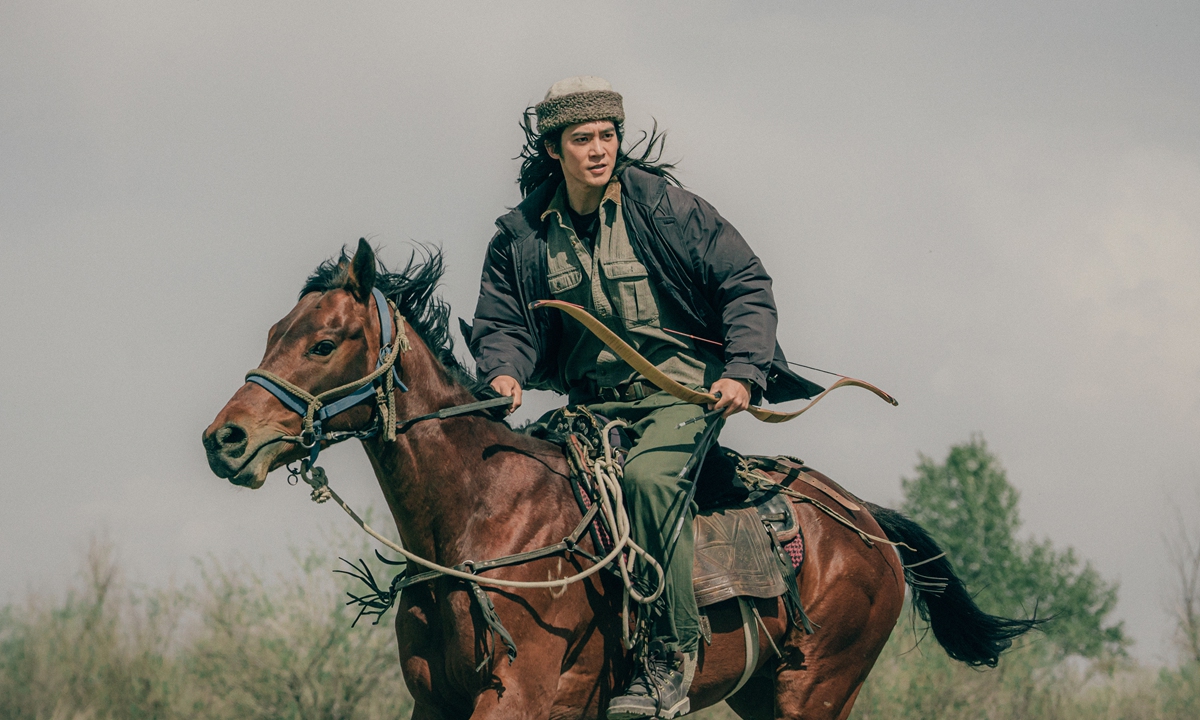A TV drama series about the lives of Kazakh cattle herders as they move huge numbers of animals across the Altai mountains of Xinjiang has been a surprise hit across China. Emily Zhou reports.
THE NEW CHINESE TV series “To the Wonder” (《我的阿勒泰》) will be representing China at the famous Cannes film festival in France.
The series got a great review on Douban(豆瓣), a Chinese movie rating website, just a few days after it started. Based on the collection of essays of the same name by Chinese author Li Juan (李娟), the television drama tells the story of the family of Li Wenxiu (李文秀), who run a kiosk in the Altai mountains and follow the Kazakh herdsmen as they migrate between their spring and summer grazing pastures.
“We live in a lively style, even if life is bumpy.”
Li Juan
Her nomad life takes her deep into the remote northern borderlands of China, where she meets people and things she’s never seen before and experiences the full depth of life through the herder’s culture and the power of nature. Since the start of the TV series, Altai has been a hot tourist destination, especially for young Chinese.

Since the 18th century, the Kazakhs of China have lived for generations in the Altai region of Xinjiang on the banks of the Ili River (伊犁河), continuing their ‘transhumance’ (a term for movement of livestock to seasonal grazing grounds) four times a year.
Transhumance is a great celebration for the Kazakhs, who bring their own flocks of sheep, horses and camels with them as the seasons change, following the abundant water and lush grass. Sheep are not only a source of energy for the Kazakhs, but also a major part of their livelihood. In the long history of Kazakh nomad life, regular transhumance has maintained a harmonious balance between the grass, the sheep and the Kazakhs.

March and April mark the beginning of spring in northern China. Kazakh herders move to spring pastures on the slopes or foothills of mountains and along the banks of rivers. Most of this land receives abundant spring rains, making it easy for the herders to give birth to lambs and raise young animals.

After a few months of grazing, there is nothing left of the pasture grass in the spring pastures, while at the same time the alpine pastures welcome the season of abundant water and grass, coupled with the fact that the alpine pastures are well ventilated, with fewer mosquitoes and flies, so that these places become the best places for grazing in the summer.
As a result, by the end of June each year, Kazakh shepherds leave their spring pastures and move their cattle and sheep to the summer pastures in easy-to-movable felt houses. This is the easiest period of the year for the shepherds and is dominated by the making of blankets, the processing of dairy products and the organisation of weddings, celebrations and fairs.

As a transition from summer to winter, when autumn arrives, herders tend to migrate to the mountains near the spring water sources, where they are busy tidying up their herds, shearing their young and so on. Compared to China’s inland cities, winter comes early in Altai.
Before the temperature drops, herders move to winter pastures – usually located in mountain valleys, river bays, sand dunes and other areas sheltered from the wind and snow, where the climate is warmer to ensure that the livestock can overwinter safely.

Four times a year, the Kazakhs have to travel tens to hundreds of kilometres in a few consecutive days, negotiating rugged mountain passes while tending to their own herds and large livestock, feeding on milk and naan, and sleeping in simple tents at night – hard work.
According to Han Dynasty history books, believed to be the earliest record of Kazakh transhumance, the tradition has been going on for nearly 3,000 years.

The TV drama “To the Wonder” not only documents the transhumance of the Kazakhs, but also shows the friction between modern society and old traditions: an excellent Kazakh hunter is asked to remove his knife at the security check at the train station; when he returns to his pasture in Altai, he is asked to hand over his rifle; and when he prepares to go on transhumance in early summer, there are no other herders to join his family on the remote, difficult, old roads.
Faced with this, he felt helpless and sorrowful – yes, with China’s rapid modernisation, herders are living in settlements in counties or cities; hunting has been banned by the government to protect wild animals; there are more convenient motorways and vehicles to use in transhumance – all this is the result of modernisation, and people are indeed leading better lives. However, it cannot be ignored that the old traditional Kazakh culture is dying and the last nomadic people in China may disappear in the near future.
Image at the top by iQiyi.

